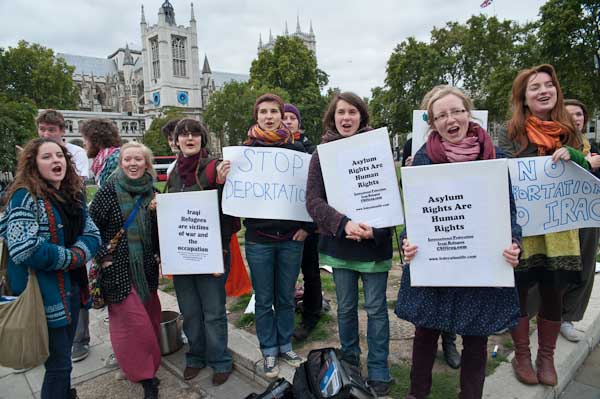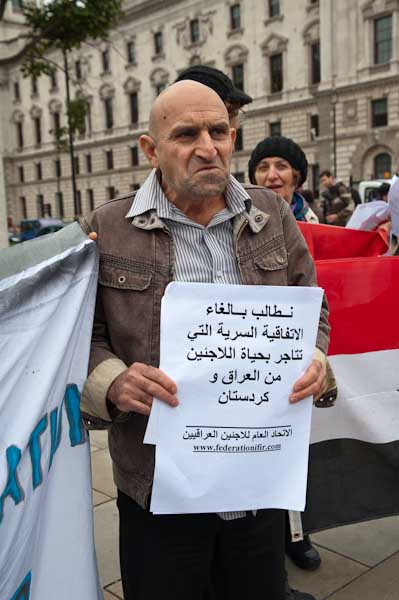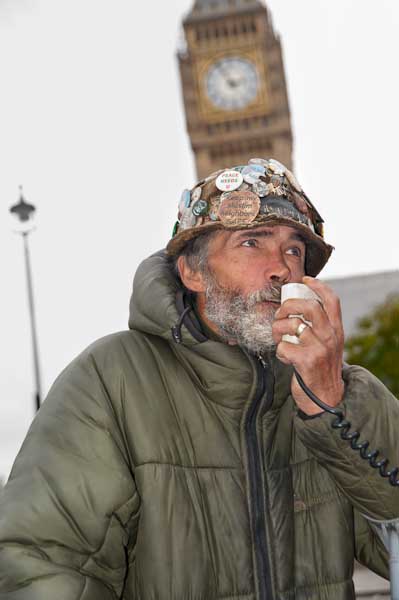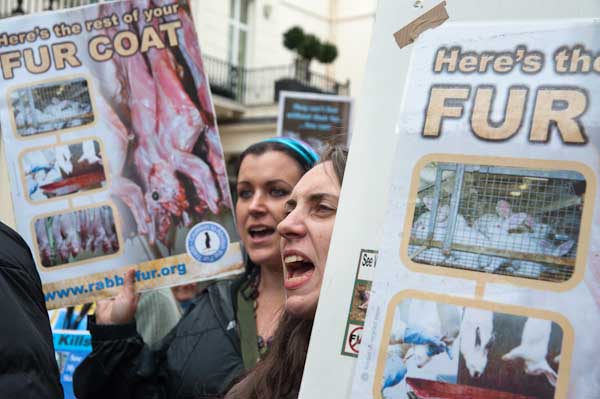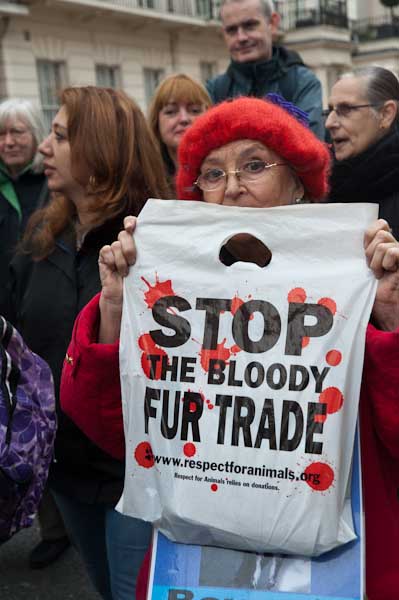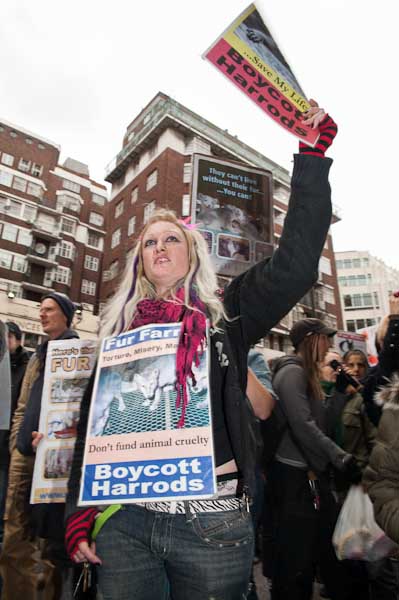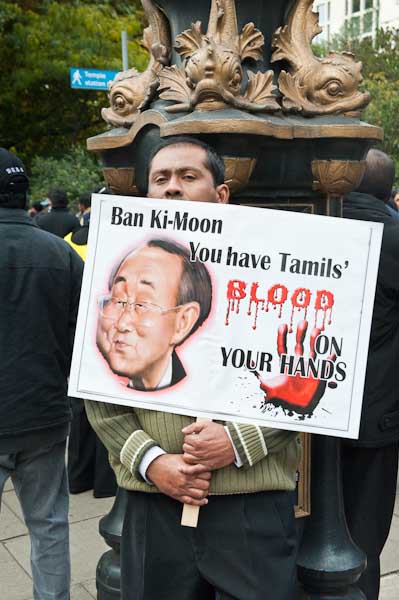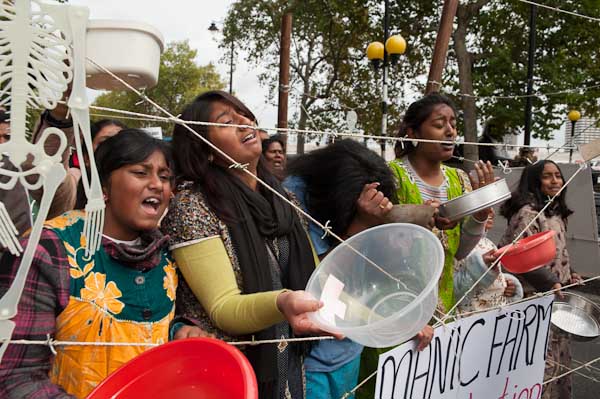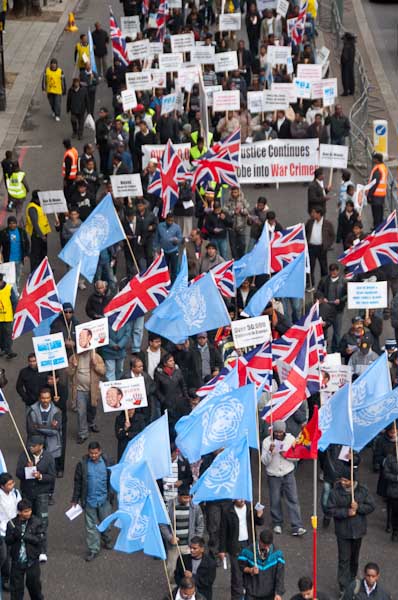While these were the questions asked over the toast and marmalade in many homes this morning, for once I knew all the answers. Because I was at the centre of David Wilshire MP’s constituency, Staines. Spelthorne is at the centre of all those reservoirs visible on the left immediately after take-off from Heathrow as you wantonly increase your carbon footprint.
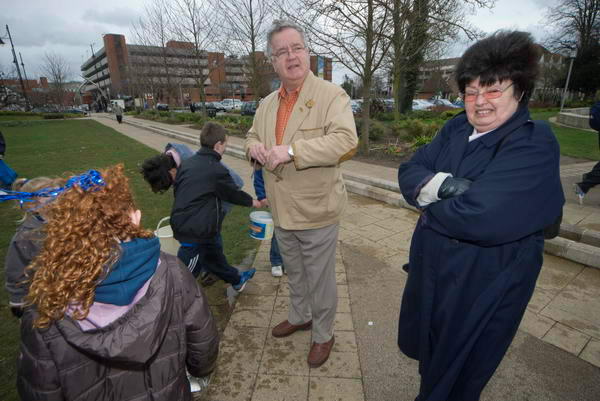
David Wilshire and his partner and office manager Ann Palmer
All that water is not enough for our local council, which also goes under the rather silly name of Spelthorne, and despite the fact that the River Thames was only a few yards behind me they had to install the rather fatuous ‘water feature’ (a concrete ditch) that you can see behind the Spelthorne MP and his very personal assistant taking part in a very worthwhile charity event Stepping Out for Water that I photographed last year.
Mr Wilshire has earned some local respect for getting involved in events such as this, where he came to speak at the meeting in the Staines Riverside Gardens/Car Park at the end of a walk raising concern and cash about the one fifth of the world who lack clean water and the 40% who lack basic sanitation – and our failure to do our part to meet the Millennium Development Goals, one of which included the aim to halve those without clean water and sanitation by 2015. He’s also supported other events, such as a Trade Justice demonstration in Staines. So he isn’t all bad.
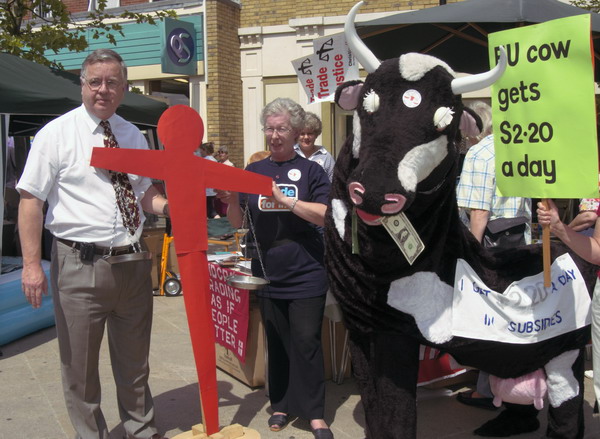
Wilshire at a Trade Justice demonstration in Staines in 2003
He also regularly replies to letters from me and Linda, telling us of his support for various things we oppose – such as the wasting of vast amounts of money on Trident and the expansion of Heathrow – an issue where he is one of few local MPs to defy official Conservative policy. But he does keep in contact with constituents and argue the case even if he almost invariably ends up coming to the wrong conclusion.
He must have been doing something right, as there is a group of local Tories reported to be trying to get rid of him since August – though their main beef is over his expenses claims, others criticise him for not living in the borough (reportedly he has homes in Somerset, Hanworth and London.) The current allegations are about payments to Moorlands Research Services, an unregistered company owned by himself and his partner, Ann Palmer.
Spelthorne exists because of opposition by Conservative backwoodsmen and women back in the 1960s, who fought tooth and nail to keep this true blue area out of Greater London and in particular the London Borough of Hounslow (thus ensuring it remained under Labour control. Oh dear!) It then jumped over the Thames to become part of Surrey, although that country has never quite accepted it, and even now some local activities get missed out from Surrey listings because they are in Middlesex. But Staines really isn’t Surrey. We have the crime rates, unemployment and social problems you’d expect for outer London, with an extra dose of pollution from Heathrow and three motorways around our edges – the M25, M3 and M4.
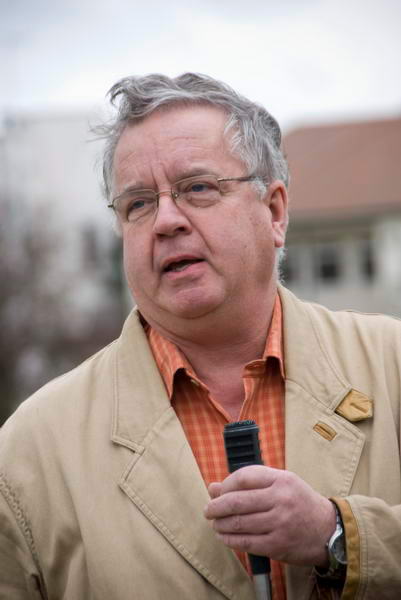
David Wilshire MP speaks. Rather a lot of nonsense as usual.
Wilshire, a former Conservative whip, probably last made the national headlines for the controversial Section 28 which he introduced into the Local Government Act, 1988 aimed at preventing “local authorities from promoting homosexuality“. A half-baked and largely ineffectual attempt at discrimination, it had the effect of uniting and galvanising LGBT groups in protest and thus advancing the cause of equality in the period until it was repealed (in Scotland in 2000 and the rest of the UK in 2003 – hard to comprehend why it took New Labour so long.)
It seems inevitable in the current climate that Wilshire will have to go – whatever the justice of his case. But I don’t hold out any great hope that the conservative candidate that replaces him as MP (a monkey with a blue rosette would get elected here) will be any better.
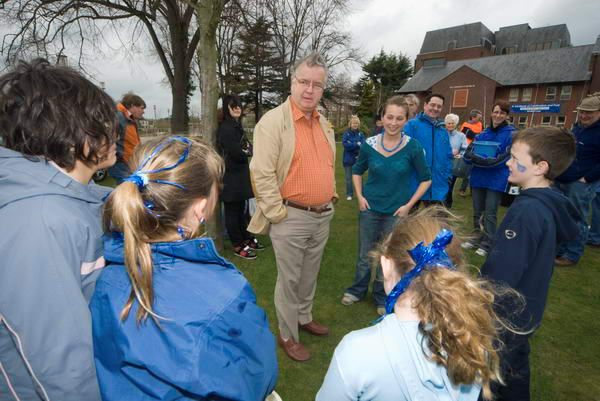
Another picture from ‘Stepping Out For Water‘
